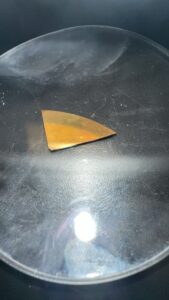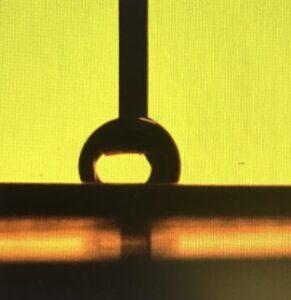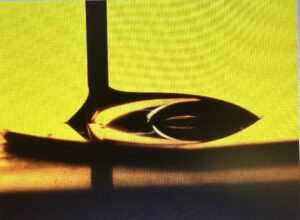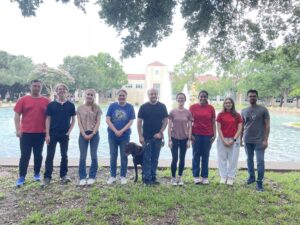Hello everyone! As I’m nearing the end of my research at Professor Baldelli’s lab, I’ve been doing more of presentation prepping and giving than experimenting.
For most of this week, I prepped for my presentation that took place during our weekly Friday morning meeting. In that presentation included an overview of what I have been doing in lab along with the results I’ve been acquiring. For more in depth information about what I presented visit the link below!
After our group meeting, we all walked over to the campus fountain and took pictures!
Alongside my presentation for the group meeting, I have been preparing for my poster presentation that will take place in the lobby from 1-3 this Friday. I’m still putting it together, so I will include it in the next blog!
I did get to try etching this week as well. Etching is a process where you take a solution of KOH/KCN (potassium hydroxide/potassium cyanide) and remove bare gold from the areas where the PDMS stamp did not make contact. Etching is a crucial process due to its ability to create precise patterns, structures, and surface conditions. On a larger scale, microcontact printing and etching is used in various industries including medical, automotive, and environmental applications. My results for etching are below:

On the left side of the gold is where my PDMS stamp was and on the right side is where the bare gold was etched (it looks more coppery than the left side).
To tell if the etching worked, you have to take contact angles. The etched gold should be hydrophilic whereas the stamped gold remains hydrophobic.

This is the stamped part of the gold. The Octadecanethiol (ODT) acted as a wet-etch protection making the gold in this area stay hydrophobic. The contact angles for this droplet are 100.1 degrees for the left side and 97.0 degrees for the right side.

This is the bare gold section where the stamp made no contact after being doused in Octadecanethiol (ODT). Since there was no protection barrier being provided by the ODT, the gold was essentially corroded away from the etchants, making it hydrophilic. The contact angles are 41.6 degrees for the left side and 48.1 degrees for the right side.


There are no comments published yet.